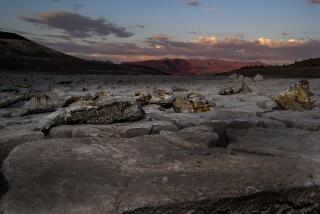Shifting Weather Pattern Clears Midwestern Skies
- Share via
After hosing down the Midwest for the better part of six weeks, this summer’s merciless weather pattern has shifted west and finally let sunshine sneak back to the flooded prairie.
Meteorologists said Thursday that some locally heavy showers may still sweep through soggy sections of the Midwest, but the thunderstorms should be relatively brief, pose little danger of additional flooding and be separated by long periods of clear skies and dry winds.
Despite this, National Weather Service forecasters said the Mississippi River at St. Louis is so high--a record 48 feet--that it is unlikely to drop below flood stage before Aug. 26. Gary Dyhouse, a U.S. Army Corps of Engineers hydrologist, was even more pessimistic, saying he thought the river could linger over flood levels well into September.
Now that it has relocated to the west, the potent combination of errant high-pressure cells and contorted jet streams that had poured rain onto the Midwest for most of June has begun to convey normal amounts of moisture to the desert Southwest.
“The whole thing is moving to the west, so the import of tropical moisture from the Gulf of Mexico has been cut off,” said James Murakami, staff meteorologist for UCLA’s department of atmospheric sciences. “It’s like a bathtub. We’ve seen the faucet turned off, so we should start to see it drain out.”
The bad news is that much of the rest of the nation--from the Northeast through the South and on into Texas and Oklahoma--are likely to continue to experience unusually warm and dry weather for awhile, meteorologists said.
Record rains in the Great Plains were caused by an unusual combination of low-level moisture from the Gulf of Mexico and high-level moisture from the Gulf of California colliding with the jet stream blasting out of the Gulf of Alaska.
Meteorologist Dean Jones of WeatherData Inc., a private forecasting firm in Wichita, Kan., said the twin sources of moisture “made the atmosphere so soupy that as soon as the jet stream added a little energy, we had thunderstorm after thunderstorm, day after day.”
Now, Jones said, the Midwest should settle back into a normal pattern of occasional light summer thunderstorms.
More to Read
Sign up for Essential California
The most important California stories and recommendations in your inbox every morning.
You may occasionally receive promotional content from the Los Angeles Times.








